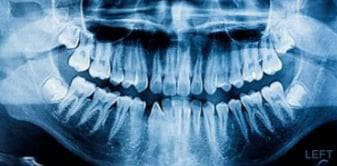
Why Are X-Rays Important in the Dental Office?
When you visit the dentist for a routine checkup, one of the most common procedures you may encounter is getting dental X-rays. Though it may seem like a simple step, X-rays are a crucial diagnostic tool in modern dentistry. They offer an inside look at the structures of the mouth that are not visible during a regular visual examination. So why exactly are X-rays so important in the dental office? Let’s explore the key reasons.
- Early Detection of Dental Problems
One of the main benefits of dental X-rays is their ability to detect problems early—often before you feel any pain or notice anything unusual. Tooth decay, for example, often begins between teeth or beneath existing fillings where it’s not visible to the naked eye. X-rays can reveal these hidden cavities and allow your dentist to address them before they become more serious.
Gum disease is another condition that can sneak up silently. X-rays help your dentist assess the bone level around your teeth and identify signs of periodontal disease, such as bone loss, long before more obvious symptoms like gum recession or tooth mobility appear.
- Monitoring Tooth and Jaw Development
For children and adolescents, X-rays are essential in monitoring the growth and development of their teeth and jaws. Dentists use them to check if permanent teeth are developing properly and to detect any issues like impacted teeth, missing teeth, or alignment concerns. Orthodontists rely heavily on X-rays to plan treatments like braces by analyzing jaw position, tooth spacing, and bite issues.
In adults, X-rays are helpful in tracking changes in tooth alignment and jawbone health, particularly for patients with a history of dental problems or those undergoing ongoing treatment.
- Evaluating the Health of Restorations and Implants
Dental restorations such as crowns, bridges, and fillings can look fine on the surface, but underlying issues may still exist. X-rays can reveal decay under a crown or margin of a filling that is not sealed properly. For patients with dental implants, X-rays help monitor the integration of the implant with the bone and check for any signs of implant failure or infection.
- Diagnosing Infections and Abscesses
X-rays are vital in detecting infections that can develop at the root of a tooth or in the surrounding bone. These infections might cause swelling or pain but sometimes present no symptoms at all in the early stages. An X-ray allows the dentist to see the extent of the infection, determine if a root canal is needed, or decide if extraction is the best course of action.
In addition, X-rays can help diagnose cysts, tumors, or other abnormalities in the jawbones and surrounding tissues. While these findings are rare, early detection is essential for successful treatment and better outcomes.
- Planning and Performing Treatments
Dental X-rays are not just for diagnosis—they’re also a key part of planning treatments. Whether it’s placing an implant, extracting a tooth, or performing a root canal, X-rays give the dentist a detailed view of the area being treated. They help avoid complications, guide surgical precision, and improve the chances of treatment success.
For example, before a tooth extraction, an X-ray shows the tooth’s shape, size, and position in relation to nearby structures such as nerves and sinuses. This information is critical to minimizing risks during the procedure.
X-rays Are an Indispensable Tool
X-rays are an indispensable tool in the dental office, playing a pivotal role in diagnosis, prevention, treatment planning, and monitoring. While they may seem routine, they offer dentists a powerful way to see the full picture of your oral health—beyond what the eyes can see. With today’s digital X-ray technology, radiation exposure is minimal, and the benefits far outweigh the risks. So next time your dentist recommends an X-ray, know that it’s being done to protect your smile and keep your teeth healthy for years to come.
